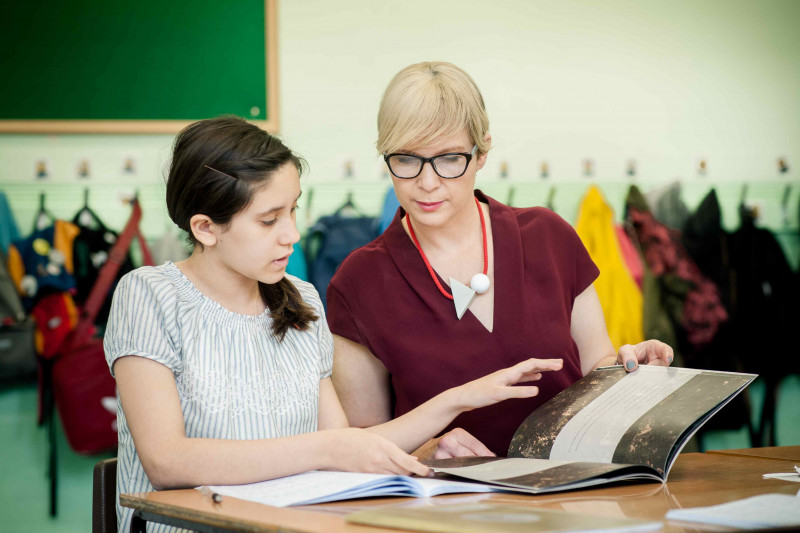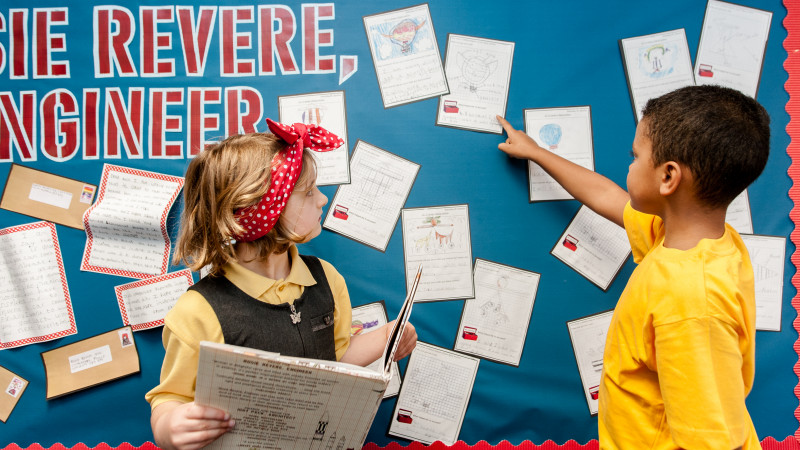Posted on: 05/07/2024
This blog post follows on from Impactful Moderation Conversations: Part 1, in which we discussed the value of writing moderation and explored key factors to consider when setting up for internal moderation. In this blog post, we will share a step-by-step process that can be used to guide a moderation conversation. It aims to provide a useful scaffold to help ensure consistency in the writing moderation process. It is not intended to be prescriptive or inflexible and can be interpreted and used to support a range of approaches to moderation such as individual year group conversations with SLT or collaborative phase conversations in a staff meeting.
While it can be tempting to dive straight into looking at a child’s writing, starting with a ‘bigger picture’ conversation can be invaluable in developing contextual knowledge around their writing behaviours and skills. This can then support a deeper and more rigorous discussion about what the child can do, what they cannot yet do and what they are developing their confidence with. It also means that, as teachers, we can share any key information for that child that may impact on their progress and attainment in some way.
Statements and questions to guide this conversation might include:

Through these conversations, it might emerge that a child writes quickly and enthusiastically for ten minutes but then quickly loses focus and stamina, or we might find out that a child is often late in the morning and therefore often misses the first part of English lessons. While this will not impact on our moderation of assessment judgements, it provides crucial information about why pupils might struggle – or thrive – with certain aspects of writing.

Follow this initial conversation by looking at one piece of writing that gives a good overall picture of the child as writer. Teachers will usually be able to identify what works well as a starting point; perhaps it’s a story that the child particularly enjoyed writing or a non-chronological report that really demonstrated the child’s strengths. Take time to read this piece of work and to discuss what the child does well in this. It can be really powerful here to read work aloud; this often helps us to ‘spot’ things in children’s writing we might not notice when reading silently from the page.
Using an assessment framework, identify and discuss where and how the child demonstrates that they are working at a particular standard in this piece of writing. Look for evidence to support specific statements. For example, a story written by a Year 2 child may show effective use of expanded noun phrases for description and specification and conjunctions for co-ordination and subordination. In addition, pay attention to any gaps; perhaps the same piece does not demonstrate evidence of using different sentence forms or of correct and consistent use of tense. It will therefore be important to look out for evidence of these in other writing outcomes.
One piece of writing gives us a snapshot of what a child was able to produce on one day with a specific audience and purpose in mind. If we want a more accurate picture a child’s overall attainment, it’s crucial that we look at a broader range of writing outcomes over time. A common question here is: ‘How many pieces should we look at?’ There is no one right answer to this and it can depend on many factors, such as how securely a child is demonstrating evidence of consistently working at a standard and whether writing outcomes looked at so far have offered the opportunity for the attainment of all assessment statements.


What is most important is to look at writing outcomes for a broad range of audiences and purposes. For example, for one child we might look at an own-version narrative written to entertain younger readers, a guide to the local area to inform visitors, a diary entry in role reflecting on an exciting day and a poster requesting help with finding an unidentified animal.
When reading and discussing a range of writing outcomes, continue to use the assessment framework to underpin conversations, identifying where there is evidence of attainment against the statements and where there are any gaps.

Once a collection of writing outcomes has been reviewed and rigorously discussed, use the assessment framework to make a decision about whether the child is or is not working at the standard initially put forward by the teacher. If not, it is crucial is to identify and agree the specific gaps in attainment. This then supports the development of a more accurate shared understanding of what the attainment of this standard looks like.
Writing moderation conversations offer an excellent opportunity to identify priority areas that, when addressed, will support a child to move forward in their learning. Often, these priority areas are linked to an assessment framework and therefore emerge clearly during the moderation process. At other times, we might need to delve beyond the framework to identify a specific priority area. Once we have identified this area, it can be useful to discuss and decide on strategies to address this moving forward, drawing on collective expertise to do so. This means that teachers leave the conversation with something concrete to implement to support this pupil moving forward, rather than just an idea of what they need to work on.
Posted in: Moderation | Curriculum